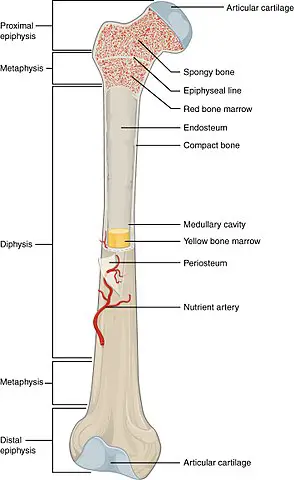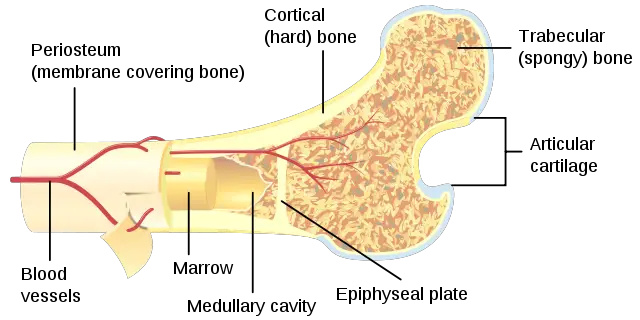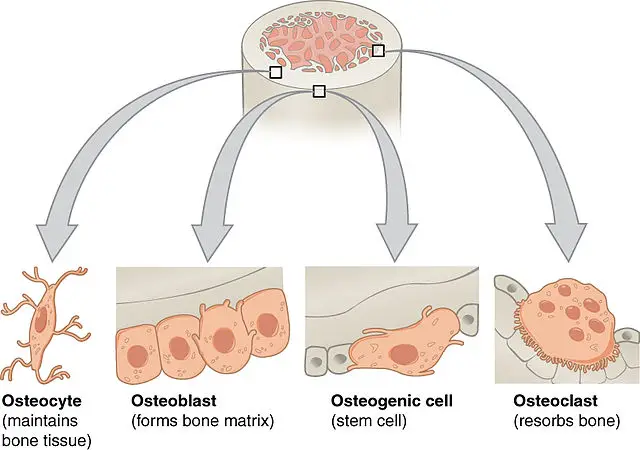Bones are part of the human skeleton. They work with tendons and ligaments to give the body a frame for its muscles, tissues, and organs.
Your bones serve three functions for your body: support, protection, and motion.
The Division of Bones
Humans are vertebrates. This means that they have a backbone. All vertebrates have two groups of bones: axial and appendicular.
Axial bones are bones that are part of your spine and skull. These bones allow you to stand up straight, keep your head up, and provide a base for your appendicular bones.
Appendicular bones are the bones that allow you to move. They consist of your hips, shoulders, and limbs.

Axial Bones
Your spine is also called the vertebral column. It is a collection of small bones that protect your spinal cord. The spinal cord is a collection of nerve fibers that run from your brain to different parts of your body.
The spine is also important as it is a location where many of your back muscles can anchor. Without these muscles attaching to your spine, you wouldn’t be able to move in any of the ways that you are used to.
Your rib cage protects many of your most vital organs – like the heart and lungs. It is made up of 12 vertebrae, 24 ribs, and a sternum. The sternum is a large vertical bone that is also called the breastbone.
The skull is made up of the cranium bone, as well as other smaller bones. It protects your brain and contains other organs like eyes, ears, nose, and mouth.

Appendicular Bones
There are three groups of appendicular bones: girdles, long bones, and extremities.
The girdles are the bones closest to the axial bones. They join your limbs to your main body.
The pelvic girdle is usually called your hip. It is made up of three bones that join your femur to your spine.
The pectoral girdle is your shoulder. It is made up of your shoulder blade and collarbone. They connect your arms to your spine.
The long bones are your arms and legs. They are thick bones that anchor muscles that help you move. These bones are the femur, tibia, fibula, humerus, radius, and ulna. The bones in your knees and elbows are also appendicular bones.
Your hands and feet are the last group of appendicular bones. These groups of bones are small and specialized. They allow you do complete complex tasks.

How Bones are Formed
Bones begin their life as cartilage – a firm connective tissue that is found throughout the body. Before birth, the cartilage of the arms and legs begin to harden as it transitions to becoming bone.
The process of cartilage turning to bone is called ossification. A special type of cell called osteoblast changes the cartilage to bone, allowing calcium deposits. Calcium is what makes the bones hard.
Interesting Facts:
- An adult human has 206 bones
- The axial bones are the most primitive and were the first bones to evolve in human beings
- The wrist has 8 bones and the ankle has 7